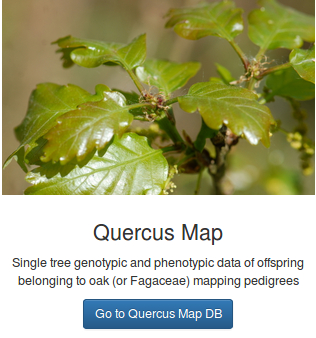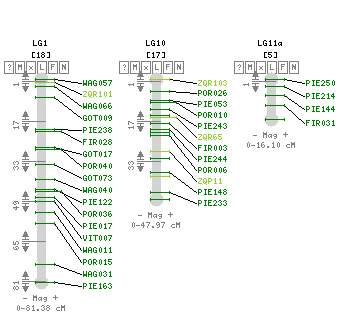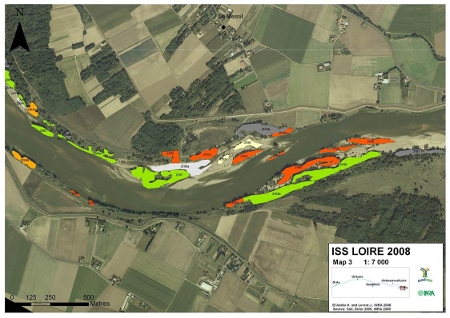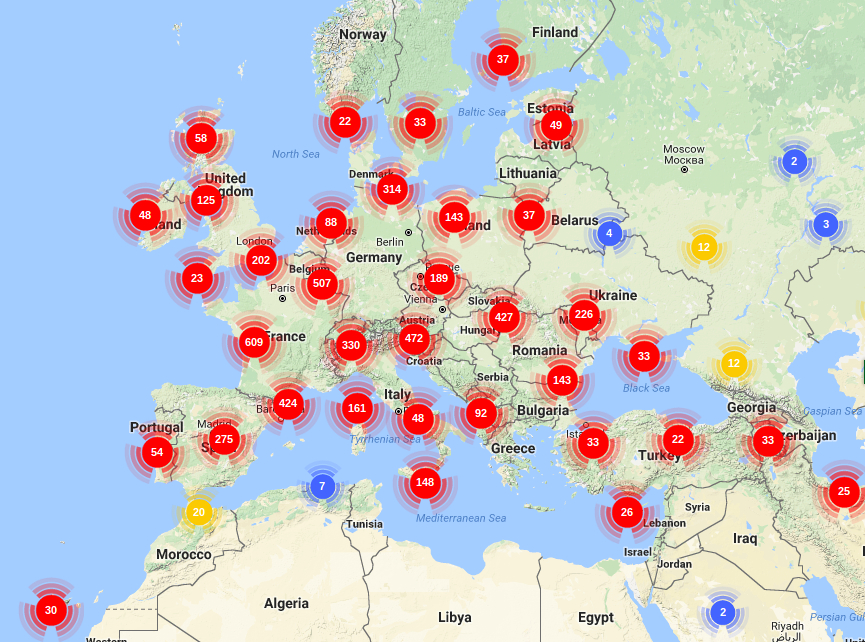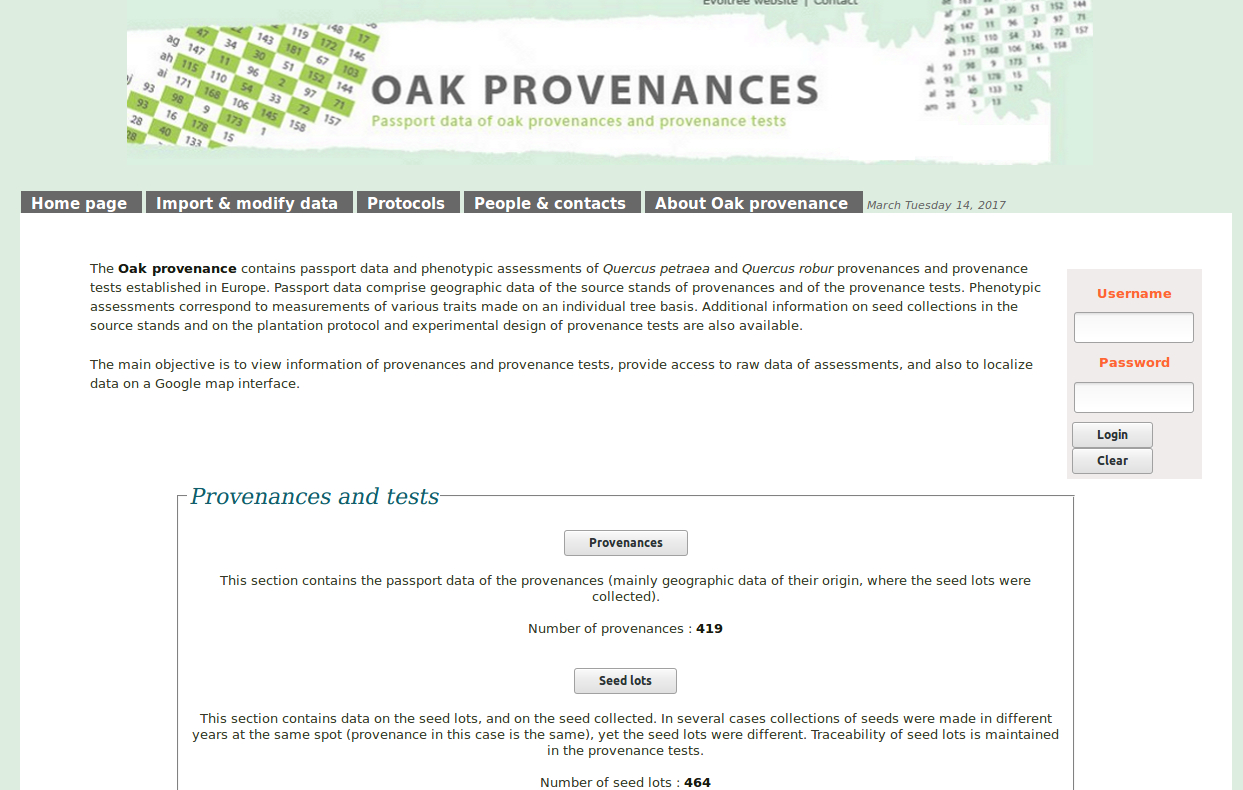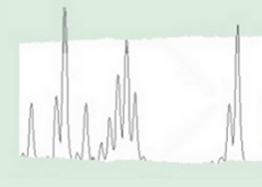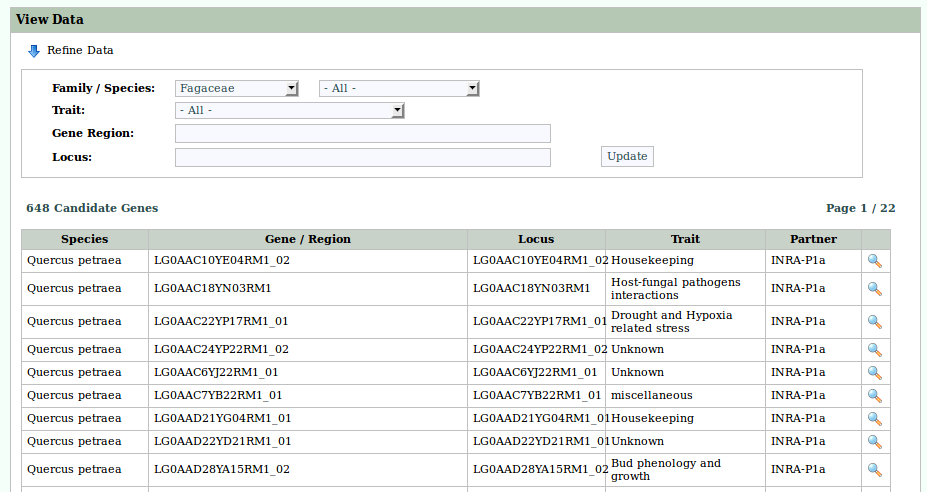SYNTHETIC MAPS OF GENE DIVERSITY AND PROVENANCE PERFORMANCE
FAIROAK : Synthetic maps of gene diversity and provenance performance for utilization and conservation of oak genetic resources in Europe
Funded by the EU - 1 March 1996 to 31 August 1999
Website: http://www.pierroton.inra.fr/Fairoak/
Final report: https://www4.bordeaux-aquitaine.inra.fr/biogeco/content/download/3681/42015/version/1/file/FairOak-FullFinalReport.pdf
Executive summary
Synthetic maps of chloroplast DNA haplotypes were constructed in white oaks at a European scale. The maps are based on a total number 2673 populations (12714 trees) that were collected in eight different species (Q. canariensis, Q. faginea, Q.frainetto, Q. macranthera, Q.petraea, Q. pubescens, Q. pyrenaica, Q. robur) distributed in 22 different countries. The total data set represents an unprecedented achievement in population genetics in plants. A common strategy for molecular screening, based on restriction analysis of four PCR-amplified cpDNA fragments, was used to allow comparison among the different studies. 42 chloroplast variants were detected during this survey and their phylogenetic relationships were described. These variants clustered in six cpDNA lineages, which have quite separate geographic distributions along a longitudinal gradient. A low level of diversity within population but strong differentiation among populations and clear-cut geographic patterns have been revealed during this survey. Most haplotypes found in northern Europe are also present in the south, whereas the contrary does not hold, suggesting that few of the mutations that were scored have occurred during postglacial recolonisation. A phylogeographic pattern was apparent, with related haplotypes from the same lineage having broadly similar geographic distributions. Two lineages have only a western distribution whereas 2 others are restricted to eastern regions and the last two are distributed in the central part of Europe.
Although the eight species studied systematically share cpDNA variants when in sympatry, they are partitioning cpDNA diversity differently, as a consequence of their different ecology and life history attributes. Regional differences in levels of differentiation also exist (either species-specific or general); they seem to be related to the intensity of past and present management of the forests across Europe but also to the level of fragmentation of the range within these regions.
Simultaneously, geographic maps of fossil pollen deposits were constructed at 500 years intervals between 15000BP and 6000BP. These maps are based on 600 pollen sequences available from the European Pollen Database (EPD, 483 sequences), the Alpine Palynological Database (ALPADABA 50 sequences) and about 70 sequences supplied for use in this project or digitised from published pollen diagrams. The data of pollen sequences from sites across Europe were used to reconstruct the location of refugia of the deciduous oak species, and the migration from these refugia into their current ranges. Three areas of southern Europe have been identified as refugia: southern Iberian peninsula, southern Italian peninsula and the southern Balkan peninsula. The spread of Quercus took place in two steps. First, in the lateglacial interstadial (13 to 11 ka BP) Quercus spread to the central European mountains from these refugia. Second, with the stabilisation of a climate favourable to deciduous trees species in the Holocene, the oak spread into northern Europe, rapidly into the north-west, and more slowly into the centre and east, due to physical barriers. The earlier distribution changes are strongly correlated with the shifts in climate, whereas the later changes are most strongly controlled by competition between species, landscape topography and other edaphic factors. By approximately 6 ka BP, the deciduous oak had reached its maximum extension in Europe. The distribution of haplotypes and the palynological information available were used to infer colonisation routes out of the ice-age refugia. In western Europe, in particular, movements out of the Iberian and the Italian peninsula are clearly apparent. Some movements resulted in the exchange of haplotypes among refugia, during the present interglacial and probably also during earlier cycles. This has lead to parallel colonisation routes for phylogenetically divergent haplotypes, limiting somewhat the phylogeographic structure.
Cases of disjunction in the present-day distribution of haplotypes are also apparent and could have been induced by the existence of a cold phase (the Younger Dryas, from 11,000 to 10,000 BP), which resulted in range restriction following an early warm period which lead to the first expansion of the oak from its refugia. This was followed by a new period of expansion in the postglacial, in some cases involving ‘secondary’ refugia. All this would have lead to the reshuffling of the distribution of the haplotypes. Early association between haplotypes and oak species are also suggested by the data, although extensive introgression among species has partly blurred the pattern. This means that colonisation routes may have been initially constrained by the ecological characteristics of the species hosting each chloroplast variant. We suggest for instance that two oak species distributed in the north of the Iberian peninsula (Quercus petraea and Q. robur) are recent postglacial immigrants.
Altogether, the conclusions in terms of the location of ice-age refugia and of the colonization routes derived at with the molecular information and with the fossil pollen data appear to be largely compatible.
The association between chloroplast DNA variation and nuclear controlled traits (phenotypic traits and gene markers ) was tested in 16 provenance tests and two nuclear diversity surveys in deciduous oak species (mostly Q. petraea). All over assessments of 62 different phenotypic traits (traits*tests), 8 isozyme loci and 31 RAPDs loci were used for the analysis. The test of the associations was done in two different ways : (1) by comparing provenance mean values (or allele frequencies) among different maternal lineages using ANOVA, (2) by making pairwise comparisons of chloroplastic genetic distances (CGD) with phenotypic differentiation index (DI) (or nuclear genetic distances (GD)) among all provenances using the Mantel test. Among the 62 phenotypic traits, only 7 exhibited significant associations with maternal lineages using ANOVA (mostly growth traits), and 6 using Mantel's test. This number even decreased to 2 once correction for geographic distance was introduced in the calculation of the Mantel test. There were stronger associations with gene markers. The existence of cytonuclear desequilibrium was shown by the significant differences of allozyme frequencies among the four maternal lineages (at least one allele for each locus). These associations were confirmed by significant correlations between CGD and GD. Finally associations were also found between levels of nuclear diversity and maternal lineages. These results suggested that local selection pressures acting on the installed populations and pollen flow erased progressively the initial differentation that existed among the three refugial zone after the last glaciation. At the same time, chloroplastic divergence remained still untouched. As a result, there is no association any more between chloroplastic divergence and phenotypic traits, but there is still some association with gene markers that are less affected by selection.
Geographic variation of various phenotypic traits (survival, growth, phenology) was evaluated in 19 Q. petraea provenances established in 13 provenance test across Europe. For all traits significant provenance effects were found together with significant interaction effects between experiments and provenances. Highest plant losses were found for the south-eastern provenances (Hungary, Turkey). The fastest height growth was found for two British and two German provenances, and the difference between the earliest and the latest provenance in time of flushing was not more than 4 days. There was no clinal variation for survival or height, whereas a north-south trend was very clear for the date of flushing, which in 1997 occurred in France on April 11, but 18-30 days later in various British and German sites, and 40 days later in the Danish experiment. Analyses of pairs of experiments in Germany, France and Denmark did reveal two different zones of provenance performance, i) an Atlantic zone including France, western Germany and Denmark, and ii) a Continental zone including central and eastern Germany. Within each of these zones, for all pairs of field experiments, there were highly significant correlations among provenance means between sites, suggesting low GE interactions. Foliar nutrient concentrations were also analysed for the thirteen elements C, N, P, K, Mg, Ca, Na, S, Fe, Mn, Zn, Cu, Al, and for the three ratio’s N/P, N/K, and K/P as well. The analyses were based on leaf collections from three common provenances troughout 13 field experiments Analyses showed that survival of plants were significantly dependent on foliar concentrations of the macro nutrients K and P. The concentration of K had a positive effect on survival, whereas P, when seen in connection with N and K only, had a negative effect. Significant positive effect on survival was also found for the micro nutrients Mg and Cu. No significant effects of N, P, K or any other supplementary element was found on height growth.
Gene diversity was assessed and compared among Q.petraea and Q. robur based on a genetic survey conducted with 6 microsatellite loci. The data came from 7 ISPs (Intensive Studied Plots) consisting of mixed stands comprising both species in approximately equal proportions. Both species exhibited high levels of diversity. However in each ISP, there were clear indications that there is a higher genetic variation within populations in Q. petraea than in Q. robur . There was at least one measure of diversity (among A, Ae, He and Ho) per ISP that showed higher values for Q. petraea than for Q. robur , whereas there was never any measure showing the opposite. The differences in levels of diversity were usually small, but significant. These results confirm earlier reports based on other markers and characters. There were also some indications that there is a geographic distribution of gene diversity within each species. In Q. petraea and Q. robur, populations from the central and north central area exhibit higher values than others. The systematic fine scale mapping of cpDNA polymorphism represents and unprecedented achievement in population genetics of plant species. This project represents also the first attempt to associate genetic and palinological information for reconstructing the history. Together with the results obtained in provenance tests and the genetic diversity analysis in the ISPs, many scientific, technical and economical benefits can be expected from this project ranging from the reconstruction of forest history to conservation issues and tracability applications.

